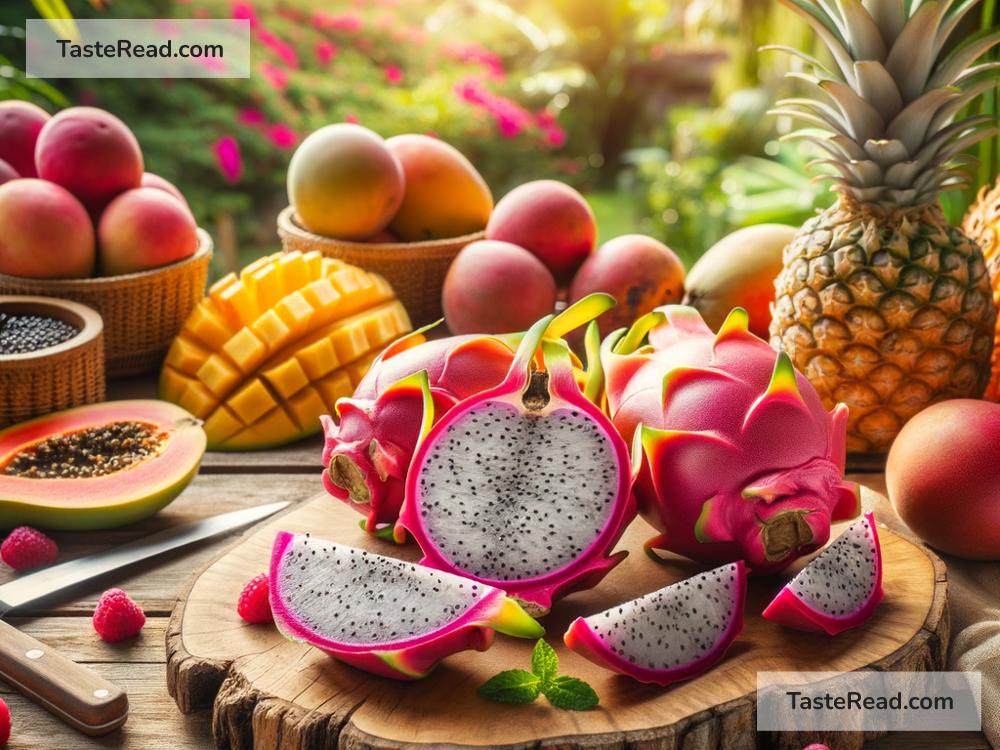Why Dragon Fruit is a Symbol of Exotic Fruits
When it comes to fruits, dragon fruit stands out. Its vibrant appearance, unique flavor, and fascinating history make it one of the most beloved exotic fruits in the world. Many people may have heard of dragon fruit, but not everyone knows why it has become a symbol of exotic fruits. Let’s take a closer look at this amazing fruit and understand what makes it so special.
What is Dragon Fruit?
Dragon fruit, also known as pitaya or pitahaya, is a tropical fruit that comes from several species of cactus. It originally grew in Central America and Mexico but is now cultivated in many parts of Asia, particularly in Vietnam, Thailand, and the Philippines. The fruit got its name because its skin resembles the scales of a mythical dragon.
There are three main types of dragon fruit:
1. White dragon fruit – white flesh with pink skin.
2. Red dragon fruit – red flesh with pink skin.
3. Yellow dragon fruit – white flesh with yellow skin.
Each type has tiny black seeds embedded in its juicy flesh. These seeds are edible and add a slight crunch to the fruit’s texture.
A Feast for the Eyes
One of the first things people notice about dragon fruit is its appearance. With its bright, vibrant colors and spiky skin, the fruit looks almost unreal, as if it came straight out of a fantasy story. The dazzling combination of pink, red, yellow, and green makes dragon fruit look exotic and exciting. It’s no surprise that people often use it as a decoration for fruit platters at parties or in photos shared online.
The visual appeal of dragon fruit plays a big role in its reputation as an exotic fruit. It’s not something you see every day, especially if you live in a region where dragon fruit isn’t grown locally. Its unusual look sparks curiosity and invites people to try it, even if they’ve never eaten it before.
A Unique Taste Experience
Dragon fruit doesn’t just look good—it tastes good too! Its flavor is mild and refreshing, often described as a mix between a kiwi and a pear. Some people say it also has a hint of melon. The subtle sweetness of dragon fruit makes it a favorite ingredient in smoothies, desserts, and salads.
For those who are tired of common fruits like apples and oranges, dragon fruit offers something different. Eating it feels like a little adventure for your taste buds. The combination of flavor and texture is part of what makes dragon fruit an exotic choice. While it may not be as strong or tangy as tropical fruits like mango or pineapple, its soft and juicy nature has won the hearts of many.
Health Benefits
Dragon fruit isn’t just about looks and taste—it’s also packed with health benefits. It’s low in calories but rich in nutrients like vitamin C, fiber, and antioxidants. These antioxidants help fight free radicals in the body, which can reduce inflammation and promote healthy skin. Additionally, dragon fruit contains prebiotic fiber, which supports gut health and improves digestion.
Many health-conscious people love dragon fruit because it’s a guilt-free treat that provides essential nutrients. It’s becoming increasingly popular among athletes and fitness enthusiasts as a refreshing post-workout snack.
Versatility in the Kitchen
Dragon fruit is a surprisingly versatile fruit. You can eat it fresh, blend it into smoothies, turn it into juice, make it into jams, or even use it as an ingredient in baked goods. Its eye-catching color also makes it perfect for food art, and chefs often use it to create visually stunning dishes.
Because of its versatility, dragon fruit has become a favorite fruit in international cuisine. Whether it’s used in desserts, cocktails, or breakfast bowls, dragon fruit always adds a touch of sophistication and a “wow” factor to the dish.
A Global Cultivation Story
Dragon fruit’s exotic status is also linked to how it spread across the globe. Originally native to Central America, the fruit has been embraced by countries in Asia, where it thrives in tropical climates. Vietnam, for example, has become one of the largest producers of dragon fruit, turning it into a symbol of the country’s agricultural success.
Today, dragon fruit is not just enjoyed in tropical regions—it has gained popularity worldwide. You can find it in supermarkets and farmers’ markets in countries far from where it is grown. Its expansion and availability are a testimony to how exotic fruits like dragon fruit have the power to connect people across cultures and continents.
Why People Love Dragon Fruit
At its core, dragon fruit is a symbol of exotic fruits because it is different. Its bold appearance, international roots, unique taste, and versatility make it stand out in a sea of familiar fruits. People are drawn to its beauty and curious about its flavor, and once they try it, they often fall in love with its refreshing personality.
It’s more than just a fruit—it’s a conversation starter, a sense of adventure, and a little piece of nature’s art. Whether you’re an experienced foodie or someone trying new things, dragon fruit serves as a reminder of the amazing diversity the world has to offer.
So, the next time you see dragon fruit at your local store or market, take a moment to appreciate its journey from being a native fruit in Central America to becoming a global symbol of exotic fruits. Then, grab one to try—because who doesn’t enjoy a taste of something extraordinary?


